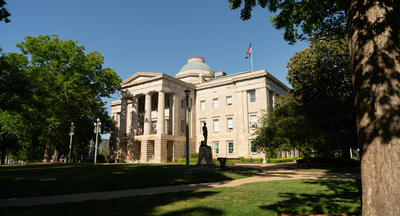
State Government Affairs, Elections & Campaigns
How Lieutenant Governors Are Selected (And Why It Matters)
December 10, 2025 | Bill Kramer
March 26, 2024 | Bill Kramer

Key Takeaways:
The provincial legislatures of Canada are starting to join many of their American counterparts in beginning their legislative sessions for the year. MultiState tracks legislation working its way through the Canadian provinces in addition to our primary focus on state legislatures in the U.S. Here are some of the key differences between the two systems.
The largest difference is, of course, that the American system of government is a republic, while the Canadian system is a constitutional monarchy. While the United States has a strict separation of powers, in Canada the Prime Minister is also a member of the Parliament. Additionally, the Canadian system leaves key roles for representatives of the King. Those differences are mirrored in the ten provinces of Canada as well. Each province has a unicameral legislature with a Premier and a Lieutenant Governor. In the U.S., Nebraska is the only state with a unicameral legislature, with the legislatures in the remaining 49 states of the bicameral variety.
The Premier is the head of the provincial government, an elected member of the provincial legislature, and typically the leader of the political party with a majority of legislative seats. The Premier is technically appointed by the King’s representative in the province — the Lieutenant Governor. The Premier is similar to a state’s Governor, except that the Premier is both the head of the executive branch in the province as well as a member of the legislative branch.
A province’s Premier also lacks the legislative veto power that many governors utilize. A province’s Lieutenant Governor could refuse “Royal Assent” to legislation passed by the legislature, which is similar to a veto, but in reality, this rarely occurs (the last refusal of royal assent was in 1945).
Finally, the U.S. was founded as a decentralized federation of states whereas Canadian history emphasized a more centralized federal system for its provinces. The U.S. Constitution spells out the specific powers of Congress, leaving everything else to the states. The Canadian Constitution does the opposite. Provinces are limited to the powers explicitly given them by the Canadian Constitution and everything else is under the purview of the federal Parliament. However, the judicial branches in both countries have gradually pared back the stark differences in federalism. In the U.S, the courts have generally interpreted the Constitution to widen federal powers and narrow state powers over time, while in Canada, the courts have narrowed federal powers and broadened the powers of the provinces.
At first glance, the Canadian provincial legislatures and American state legislatures are fairly similar. Both are democratically elected bodies that debate and enact statutes. However, they emerged from different systems of government at different historical periods, which have shaped their processes with importantly unique emphasis.
This article appeared in our Morning MultiState newsletter on February 27, 2024. For more timely insights like this, be sure to sign up for our Morning MultiState weekly morning tipsheet. We created Morning MultiState with state government affairs professionals in mind — sign up to receive the latest from our experts in your inbox every Tuesday morning. Click here to sign up.

December 10, 2025 | Bill Kramer
-d868d2-400px.jpeg)
July 1, 2025 | Maggie Mick

June 23, 2025 | David Shonerd